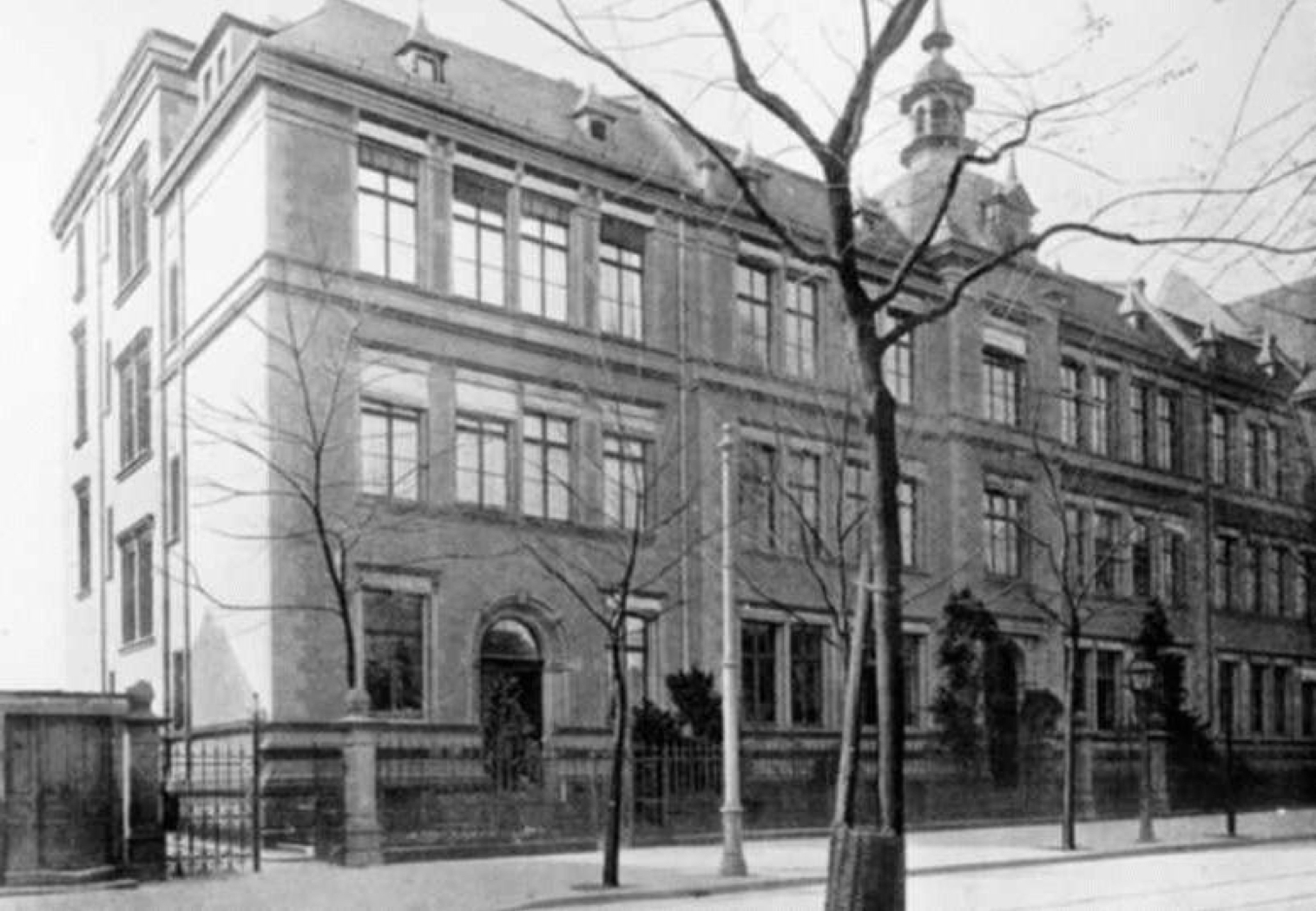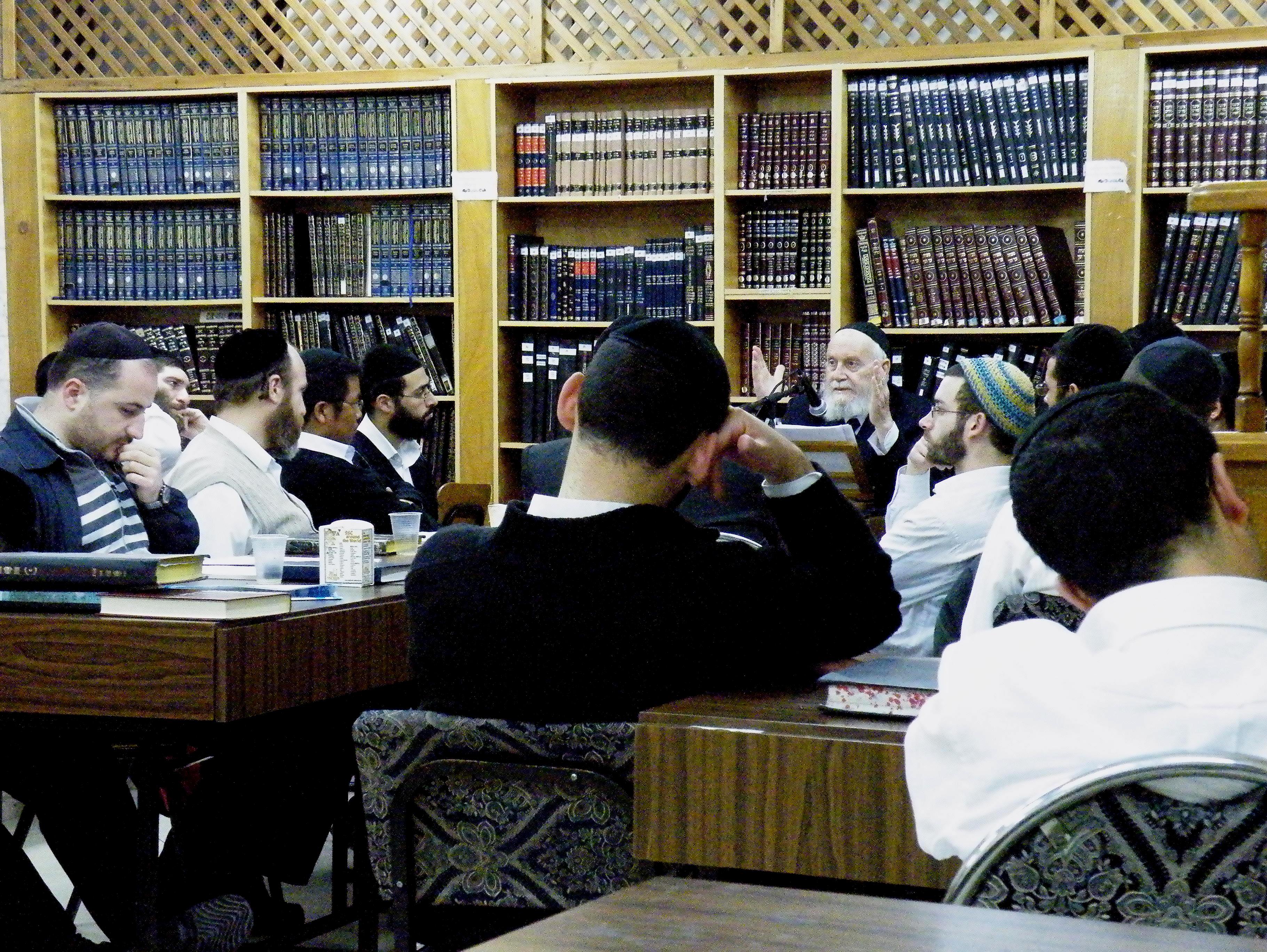|
Torah Lehranstalt
Torah Lehranstalt, also known as the Frankfurt Yeshiva or the Breuer Yeshiva, was an Orthodox Jewish yeshiva in Frankfurt am Main, founded in 1893 by Rabbi Dr. Solomon Breuer, the rabbi of the city's seceded Orthodox community (the Israelitische Religionsgesellschaft, Khal Adath Jeshurun). History Rabbi Breuer served as the rabbi of Frankfurt's seceded Orthodox Jewish community, having received the position after the death of his father-in-law, Rabbi Samson Raphael Hirsch. In 1893, he founded the Torah Lehranstalt yeshiva, aiming to raise his community's appreciation of Torah study. The yeshiva was run in the style of the Hungarian yeshivas which Rabbi Breuer had studied in prior. Besides for the classic Gemara study, the yeshiva also included a secular studies program as well as classes in Jewish history and ''Nevi'im''. There was also a focus on studying the laws of Shabbos, kashruth, prayer, and blessings. In 1911, his son, Rabbi Joseph Breuer, joined the yeshiva facult ... [...More Info...] [...Related Items...] OR: [Wikipedia] [Google] [Baidu] |
Yeshiva
A yeshiva (; he, ישיבה, , sitting; pl. , or ) is a traditional Jewish educational institution focused on the study of Rabbinic literature, primarily the Talmud and halacha (Jewish law), while Torah and Jewish philosophy are studied in parallel. The studying is usually done through daily ''shiurim'' (lectures or classes) as well as in study pairs called '' chavrusas'' (Aramaic for 'friendship' or 'companionship'). ''Chavrusa''-style learning is one of the unique features of the yeshiva. In the United States and Israel, different levels of yeshiva education have different names. In the United States, elementary-school students enroll in a ''cheder'', post- bar mitzvah-age students learn in a ''metivta'', and undergraduate-level students learn in a ''beit midrash'' or ''yeshiva gedola'' ( he, ישיבה גדולה, , large yeshiva' or 'great yeshiva). In Israel, elementary-school students enroll in a ''Talmud Torah'' or ''cheder'', post-bar mitzvah-age students l ... [...More Info...] [...Related Items...] OR: [Wikipedia] [Google] [Baidu] |
Gemara
The Gemara (also transliterated Gemarah, or in Yiddish Gemo(r)re; from Aramaic , from the Semitic root ג-מ-ר ''gamar'', to finish or complete) is the component of the Talmud comprising rabbinical analysis of and commentary on the Mishnah written in 63 books. At first, Gemara was only transmitted orally and was forbidden to be written down, however after the Mishnah was published by Judah the Prince (c. 200 CE), the work was studied exhaustively by generation after generation of rabbis in Babylonia and the Land of Israel. Their discussions were written down in a series of books that became the Gemara, which when combined with the Mishnah constituted the Talmud. There are two versions of the Gemara. The Jerusalem Talmud (Talmud Yerushalmi), also known as the Palestinian Talmud, was compiled by Jewish scholars of the Land of Israel, primarily of the academies of Tiberias and Caesarea, and was published between about 350–400 CE. The Talmud Bavli (Babylonian Talmud) was pu ... [...More Info...] [...Related Items...] OR: [Wikipedia] [Google] [Baidu] |
The Holocaust
The Holocaust, also known as the Shoah, was the genocide of European Jews during World War II. Between 1941 and 1945, Nazi Germany and its collaborators systematically murdered some six million Jews across German-occupied Europe; around two-thirds of Europe's Jewish population. The murders were carried out in pogroms and mass shootings; by a policy of extermination through labor in concentration camps; and in gas chambers and gas vans in German extermination camps, chiefly Auschwitz-Birkenau, Bełżec, Chełmno, Majdanek, Sobibór, and Treblinka in occupied Poland. Germany implemented the persecution in stages. Following Adolf Hitler's appointment as chancellor on 30 January 1933, the regime built a network of concentration camps in Germany for political opponents and those deemed "undesirable", starting with Dachau on 22 March 1933. After the passing of the Enabling Act on 24 March, which gave Hitler dictatorial plenary powers, the government began isolating Je ... [...More Info...] [...Related Items...] OR: [Wikipedia] [Google] [Baidu] |
Find A Grave
Find a Grave is a website that allows the public to search and add to an online database of cemetery records. It is owned by Ancestry.com. Its stated mission is "to help people from all over the world work together to find, record and present final disposition information as a virtual cemetery experience." Volunteers can create memorials, upload photos of grave markers or deceased persons, transcribe photos of headstones, and more. , the site claimed more than 210 million memorials. History The site was created in 1995 by Salt Lake City resident Jim Tipton (born in Alma, Michigan) to support his hobby of visiting the burial sites of celebrities. He later added an online forum. Find a Grave was launched as a commercial entity in 1998, first as a trade name and then incorporated in 2000. The site later expanded to include graves of non-celebrities, in order to allow online visitors to pay respect to their deceased relatives or friends. In 2013, Tipton sold Find a Grave to Ancestry ... [...More Info...] [...Related Items...] OR: [Wikipedia] [Google] [Baidu] |
Rosh Yeshiva
Rosh yeshiva ( he, ראש ישיבה, pl. he, ראשי ישיבה, '; Anglicized pl. ''rosh yeshivas'') is the title given to the dean of a yeshiva, a Jewish educational institution that focuses on the study of traditional religious texts, primarily the Talmud and the Torah, and ''halakha'' (Jewish law). The general role of the rosh yeshiva is to oversee the Talmudic studies and practical matters. The rosh yeshiva will often give the highest ''shiur'' (class) and is also the one to decide whether to grant permission for students to undertake classes for rabbinical ordination, known as ''semicha''. The term is a compound of the Hebrew words ''rosh'' ("head") and ''yeshiva'' (a school of religious Jewish education). The rosh yeshiva is required to have a comprehensive knowledge of the Talmud and the ability to analyse and present new perspectives, called ''chidushim'' (novellae) verbally and often in print. In some institutions, such as YU's Rabbi Isaac Elchanan Theological Semin ... [...More Info...] [...Related Items...] OR: [Wikipedia] [Google] [Baidu] |
Geni
{{disambig ...
Geni or GENI may refer to: * Geni.com, a genealogy-related web service * Geni (footballer) (b. 1980), Spanish football (soccer) player, full name Eugenio Suárez Santos * Global Environment for Network Innovations, a planned National Science Foundation facilities project * Global Energy Network Institute, a research and education organization focusing on electric power transmission networks between nations and continents * Geni, Siliguri, a census town in Darjeeling district, West Bengal, India See also *Genie (other) A genie, or jinn, is a supernatural creature in early pre-Islamic Arabian and later Islamic mythology and theology. Genie may also refer to: Arts and entertainment * Genies in popular culture Fictional characters * Genie (Disney), a character i ... [...More Info...] [...Related Items...] OR: [Wikipedia] [Google] [Baidu] |
Moravia
Moravia ( , also , ; cs, Morava ; german: link=yes, Mähren ; pl, Morawy ; szl, Morawa; la, Moravia) is a historical region in the east of the Czech Republic and one of three historical Czech lands, with Bohemia and Czech Silesia. The medieval and early modern Margraviate of Moravia was a crown land of the Lands of the Bohemian Crown from 1348 to 1918, an imperial state of the Holy Roman Empire from 1004 to 1806, a crown land of the Austrian Empire from 1804 to 1867, and a part of Austria-Hungary from 1867 to 1918. Moravia was one of the five lands of Czechoslovakia founded in 1918. In 1928 it was merged with Czech Silesia, and then dissolved in 1949 during the abolition of the land system following the communist coup d'état. Its area of 22,623.41 km2 is home to more than 3 million people. The people are historically named Moravians, a subgroup of Czechs, the other group being called Bohemians. Moravia also had been home of a large German-speaking populati ... [...More Info...] [...Related Items...] OR: [Wikipedia] [Google] [Baidu] |
Shiur (Torah)
Shiur (, , lit. ''amount'', pl. shiurim ) is a lecture on any Torah topic, such as Gemara, Mishnah, Halakha (Jewish law), Tanakh (Bible), etc. History The Hebrew term שיעור ("designated amount") came to refer to a portion of Judaic text arranged for study on a particular occasion, such as a yartzeit, the dedication of a new home, or the evening of a holiday, and then to a public reading and explanation of the same. The act of teaching and studying these texts at the designated time was known in Yiddish as ''schiur lernen''. These shiurim would be attended by all classes of people; it was traditional for learned attendees to engage the lecturer in continuous discussion, and for the larger lay audience to listen intently. Concurrently, the word came to refer to the daily study quotient for students of a yeshiva, and then to the lecture given thereon. Akiva Eger, for example,would not miss learning a single ''shiur'' with the yeshiva. His ''shiurim'' with them were ... [...More Info...] [...Related Items...] OR: [Wikipedia] [Google] [Baidu] |
Hebrew Academy Of Cleveland
The Hebrew Academy of Cleveland is a private day school in Cleveland, Ohio with over 1,000 students. It provides Judaic and secular education from pre-school through high school. The Hebrew Academy was established in 1943 by the Telshe Yeshiva and was the first Jewish day school founded outside the east coast. In 1947, Yavne, a girls division, was added. Divisions * Early Childhood Division * Girls Elementary Division * Yeshiva Ketana / Boys Elementary Division Yeshiva High School / The Oakwood Campus * Beatrice J. Stone Yavne High School. The Living Memorial Project The Living Memorial Project is a project to develop a national curriculum to teach day school students about the Jewish world in Europe before the Holocaust, headed by members of the school faculty. The curriculum has included the "Learning For Letters" Mishnayos Program, dedicating a Sefer Torah in memory of the one million martyred children, a family genealogy project and four published textbooks which delve into pr ... [...More Info...] [...Related Items...] OR: [Wikipedia] [Google] [Baidu] |
Berakhah
In Judaism, a ''berakhah'', ''bracha'', ', ' ( he, בְּרָכָה; pl. , ''berakhot'', '; "benediction," "blessing") is a formula of blessing or thanksgiving, recited in public or private, usually before the performance of a commandment, or the enjoyment of food or fragrance, and in praise on various occasions. The function of a ''berakhah'' is to acknowledge God as the source of all blessing. Berakhot also have an educational function to transform a variety of everyday actions and occurrences into religious experiences designed to increase awareness of God at all times. For this purpose, the Talmudic sage, Rabbi Meir, declared that it was the duty of every Jew to recite one hundred ''berakhot'' every day. The Mishnah of tractate Berakhot, and the gemara in both Talmuds contain detailed rabbinical discussions of ''berakhot'', upon which the laws and practice of reciting blessings are founded. ''Berakhot'' typically start with the words "Blessed are You, Lord our God..." O ... [...More Info...] [...Related Items...] OR: [Wikipedia] [Google] [Baidu] |
Jewish Prayer
Jewish prayer ( he, תְּפִלָּה, ; plural ; yi, תּפֿלה, tfile , plural ; Yinglish: davening from Yiddish 'pray') is the prayer recitation that forms part of the observance of Rabbinic Judaism. These prayers, often with instructions and commentary, are found in the ''Siddur'', the traditional Jewish prayer book. Prayer, as a "service of the heart", is in principle a Torah-based commandment. It is not time-dependent and is mandatory for both Jewish men and women. However, the rabbinic requirement to recite a specific prayer text does differentiate between men and women: Jewish men are obligated to recite three prayers each day within specific time ranges (''zmanim''), while, according to many approaches, women are only required to pray once or twice a day, and may not be required to recite a specific text. Traditionally, three prayer services are recited daily: * Morning prayer: ''Shacharit'' or ''Shaharit'' (, "of the dawn") * Afternoon prayer: ''Mincha' ... [...More Info...] [...Related Items...] OR: [Wikipedia] [Google] [Baidu] |





.jpg)